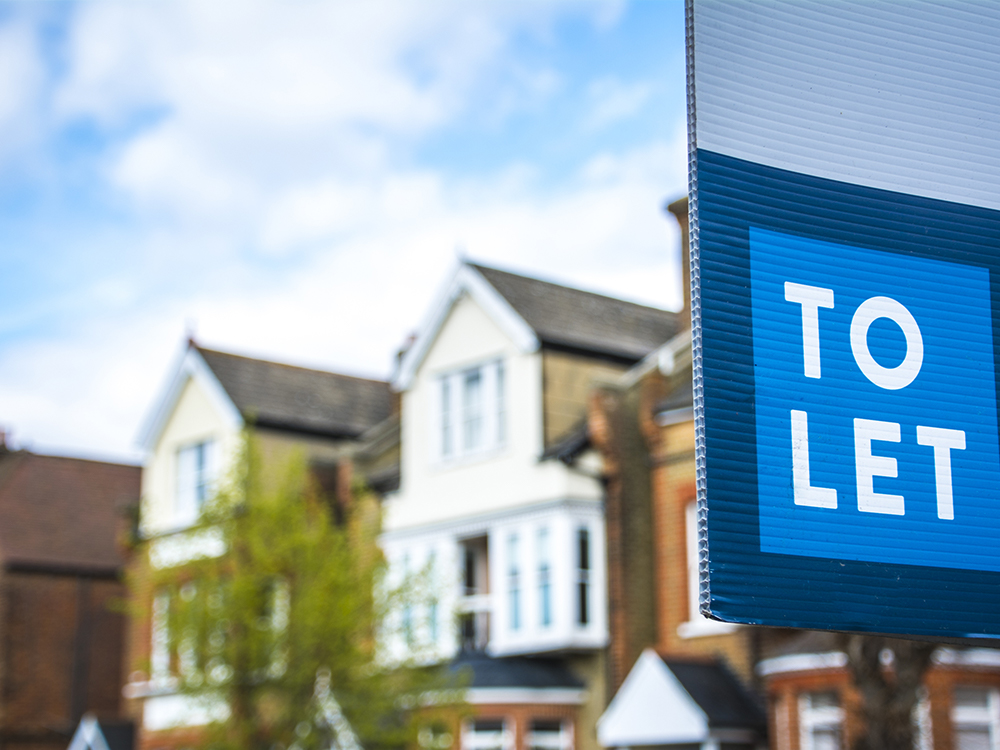UK demand calls for 230k more rental homes a year - BTL investors on full alert
New homes are a priority for the UK government. It has set a target of 340,000 new homes a year by 2025 - and an anticipated 1.8 million new households over the next ten years.

According to analysis by the consultancy Capital Economics, the UK is in need of nearly 230,000 new rental homes to address the current growth in rented property demand.
Rental homes have become popular through necessity as rapidly increasing house prices have made it difficult for first-time-buyers to save the deposit for a residential mortgage. Following the current rate of growth, the government will fall short of meeting demand expectations.
With the required increase in Buy-To-Let properties, more people renting and rental prices up by 8.3%, there are significant opportunities for buy-to-let investors across the UK.
What is buy-to-let?
A buy-to-let (BTL) is a property that is purchased with the intention of renting it out to tenants. BTLs can be a good investment for several reasons:
- Significant capital gains on the investment (2.3% increase in February 2022 – up £7,785 – was the biggest monthly jump in property asking prices in more than 20 years according to Rightmove).
- Depending on location, you can typically earn higher returns from buy-to-lets than you would from a standard savings account or investment product.
- It's a relatively low-risk investment, as property values tend to rise over the long term.
- While tenants reside in the property, they are paying toward, or even covering the full cost of the monthly mortgage repayments.
An ideal time for BTL investment
The lack of rental homes in the UK and the growing demand present an opportunity for BTL investors. The cost of owning a property is becoming too high, out-pricing many people from the market.
In the current economic climate, where living costs have risen by 6.2% in the 12 months to February many people’s only option is to rent a home.
From an investment standpoint, the current spread between the ROI and the cost of capital offers a good opportunity for investors looking to add real estate to their portfolios.
Private rents in Britain rose at their fastest rate on record in January 2022, and the average advertised rent outside London was 9.9% higher than a year ago, according to data from property website Rightmove.
BTL mortgage borrowing is increasing every year. According to the banking trade body UK Finance, there were 2.02 million outstanding BTL mortgages at the end of June 2021, up from 1.65 million at the end of 2014.
How to get started?
Whilst there are hurdles for BTL property investment, there are also opportunities and solutions for first-time investors. BTL property can be an enticing investment prospect in the current macroeconomic environment. But if you do not have the money required to purchase the BTL property outright, you will need a mortgage and you will only get a mortgage if the property is mortgageable.
While applying for a mortgage, you must tell the lender that you intend to use the money to purchase a BTL property. This is because BTL mortgages are a different product from standard mortgages and come with different terms.
BTL mortgages differ from regular ones in the following ways:
- The amount you can borrow on a BTL mortgage depends on the amount of rent the property can generate versus the cost of the mortgage. Lenders usually demand that your expected rental income meets at least 125% of the monthly interest payments on the loan.
- Some lenders require your minimum salary is at least £25,000 per annum to get a BTL mortgage. However, many lenders have scrapped this criteria.
- Interest rates are higher on BTL mortgages than standard mortgages because of the greater perceived risk.
- You must place a minimum 20-25% deposit of the purchase price for BTL mortgages. Some deals may also require a deposit of 40% or more.
- Arrangement fees on BTL mortgages are usually higher than on conventional mortgages.
What if I don’t have the deposit for a BTL - can I raise finance on another property I own?
Yes. If you own an existing property that has enough equity, then you are likely able to raise finance using that as security via a residential bridging loan and then use this loan as the deposit to purchase a BTL property. You would then be able to obtain a BTL mortgage to finance the remainder of the purchase price.
Can I get a BTL mortgage on a property which is dilapidated or requires refurbishment?
What happens if you want to purchase a BTL property but it's dilapidated or needs refurbishment?
It’s unlikely that a high street mortgage lender will offer a BTL mortgage on a property that will require significant refurbishment for example, the property may not be in a habitable state, missing a bathroom or kitchen. However, alternative financing can be used to purchase the property and pay for the works.
This type of financing is called a bridge-to-let loan. Bridging loans are a method of short-term borrowing that bridges the gap between a property purchase, and its refurbishment, to refinancing via a BTL mortgage.
Can I get a BTL mortgage on a leasehold property which has a short lease?
A lease under 80 years is considered a short lease and it can be difficult to find a mortgage provider who will lend on buy-to-let properties with leases below 70 years. Alternative financing such as residential bridging loans can be used for the initial purchase allowing the borrower to arrange for a lease extension, after which they’re then able to refinance onto a buy-to-let mortgage.
Taxes on BTL properties: what you should know
Before investing in any asset, investors must know the tax implications. The same goes for BTL properties. Here are some key things you should know regarding these taxes:
- Stamp duty on BTL properties
3% stamp duty is applicable on properties up to £250,000. - Income tax relief on BTL properties
Income tax relief has been capped at 20%. It was up to 45% previously, which helped investors offset mortgage interest and BTL mortgage arrangement fees against their income tax bills. - Capital gains tax on BTL properties
Capital gains apply to your BTL property if it rises in value by more than your capital gains tax (CGT) allowance. Currently, you can enjoy a tax-free allowance of £12,300 per person per annum.
BTL investors on full alert
Buy-to-let properties can offer a great investment opportunity. However, if you find yourself unable to obtain a BTL mortgage due to lack of deposit or the property being purchased being uninhabitable, or the lease on the property is too short, there are other finance options such as bridging finance that may be worthwhile exploring.
How we can help you
We arrange the market’s most competitive bridge-to-let and residential bridging loans available in the UK that can increase your BTL purchasing power. With our large network of top-lenders, family offices and private investors, we’re able to source the most competitive finance for your BTL property purchase. Book a call with one of our specialists.
Bridge To Let
We offer rapid bridge to let finance enabling landlords & investors take advantage of BTL residential property opportunities to extend their portfolio.
Discover More





